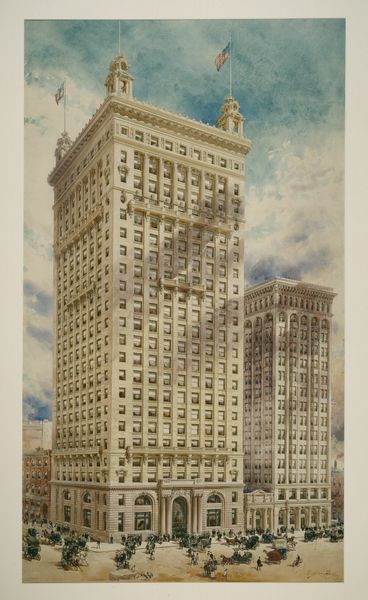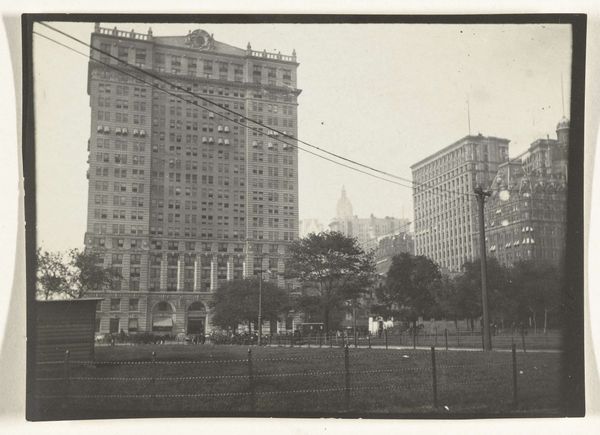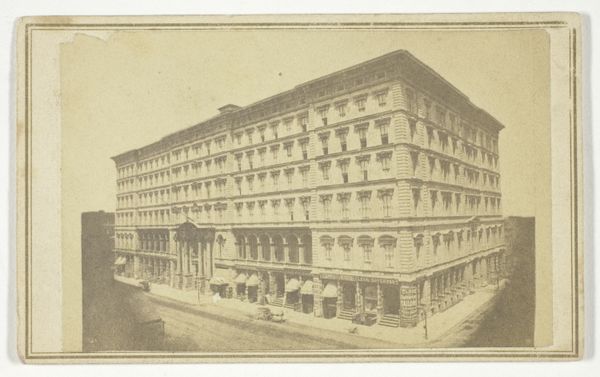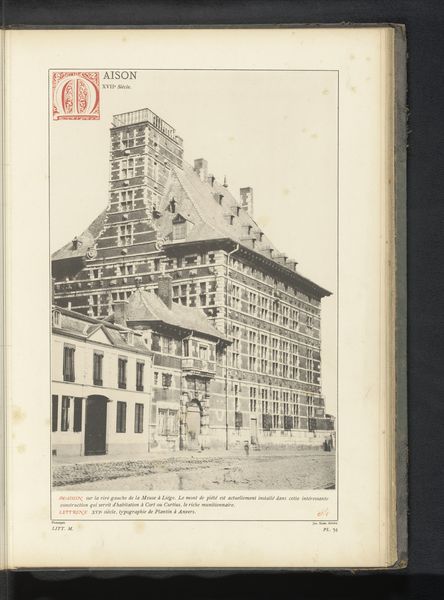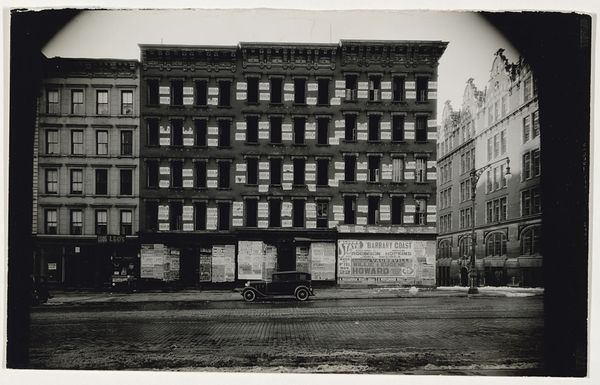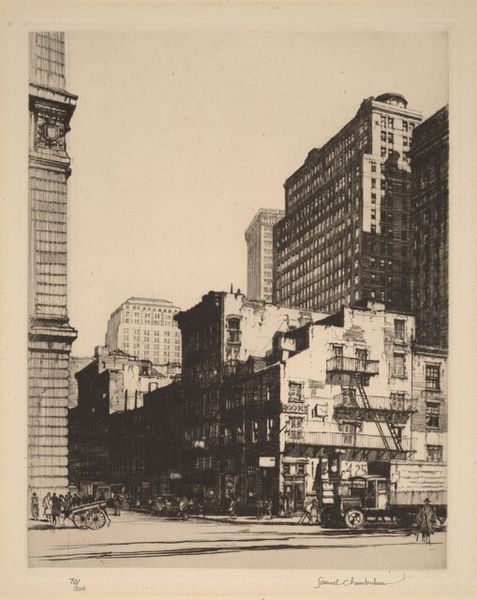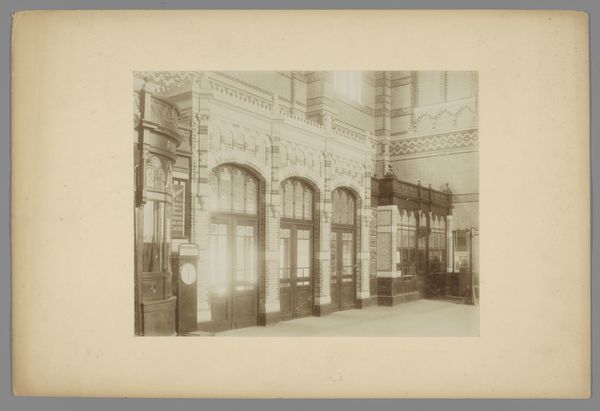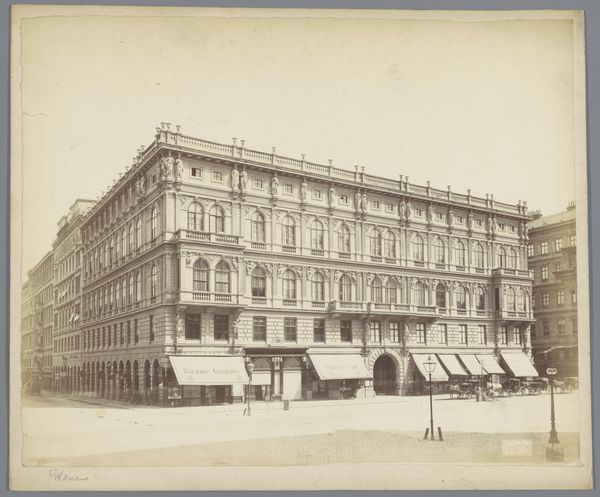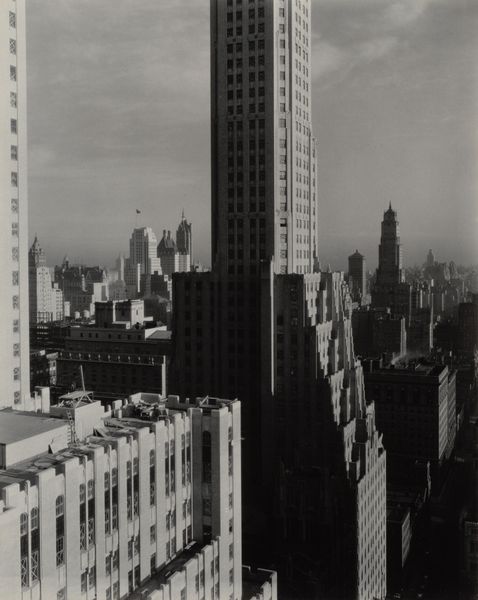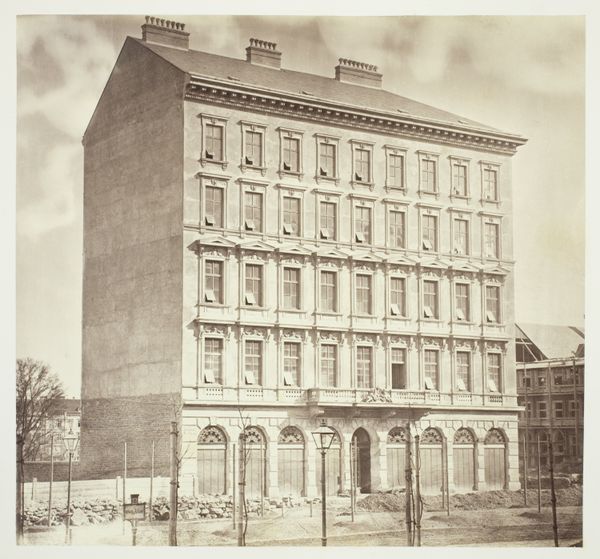
Gezicht op het Auditorium hotel en een standbeeld van Christoffel Columbus in het Lake Park in Chicago 1893
0:00
0:00
print, photography, architecture
#
statue
#
neoclassicism
# print
#
landscape
#
photography
#
park
#
cityscape
#
architecture
Dimensions: height 141 mm, width 192 mm
Copyright: Rijks Museum: Open Domain
Editor: Here we have an anonymous print from 1893, titled "Gezicht op het Auditorium hotel en een standbeeld van Christoffel Columbus in het Lake Park in Chicago," housed at the Rijksmuseum. It's a photographic cityscape featuring a very prominent statue of Columbus. What strikes you about this piece? Curator: What I see is a portrait of power and the ideologies embedded within it. This image, produced during the height of the World's Columbian Exposition, showcases not only architectural prowess but also the uncritical celebration of colonialism. Notice how the Columbus statue dominates the foreground, embodying a narrative of discovery that conveniently ignores the brutal realities of colonization and its impact on Indigenous populations. How does understanding this historical context shift your interpretation? Editor: That’s a really incisive point. I hadn’t really thought about the colonial implications so directly. Does the neoclassical style of the architecture and the statue also play into this? Curator: Absolutely. Neoclassicism, with its roots in Roman imperial imagery, was often employed to convey ideas of authority, order, and civilization – values conveniently associated with European expansion at the time. By placing Columbus within this visual language, the image normalizes and even glorifies a deeply problematic history. Do you think the artist was consciously making this statement? Editor: Maybe not consciously, but I see now how the image, regardless of intent, participates in a larger discourse of power and representation. I initially saw it as just an architectural document. Curator: Precisely. And that's the power of contextualizing art within its socio-political landscape. We begin to see how images, even seemingly straightforward ones, are laden with ideological baggage. Editor: I'm going to pay more attention to these kinds of symbols in similar images going forward!
Comments
No comments
Be the first to comment and join the conversation on the ultimate creative platform.
